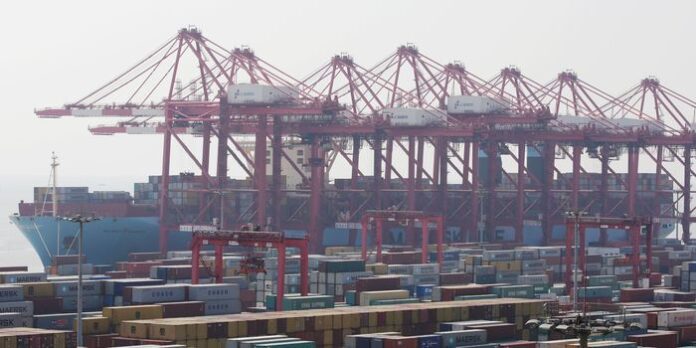Rapid Entry of Chinese Companies in South Korea’s Trade Sector
The trade landscape in South Korea is shifting dramatically as Chinese companies enter the country at an unprecedented rate. On average, one Chinese company is establishing operations in South Korea every day. This year alone, 40 firms have already reported foreign direct investment (FDI), according to the Ministry of Trade, Industry and Energy.
This surge is a direct result of the ongoing trade war between the United States and China. U.S. policies have imposed tariffs and restrictions on Chinese exports, pushing many companies to seek alternative routes to maintain their business. South Korea, with its strong industrial infrastructure and strategic location, has become a key destination for these firms.
While some companies are targeting South Korean consumers directly, others are using the country as a base to bypass U.S. trade restrictions. By manufacturing products in South Korea, they can label them as “Made in Korea” and export them globally without facing U.S. sanctions. This trend has raised concerns about South Korea’s role in the U.S.-China trade conflict.
Financial and Industrial Impact
The scale of Chinese investments in South Korea is significant. Last year, China’s FDI in South Korea reached $6.794 billion, marking a 2.5-fold increase compared to the previous year. The number of FDI applications from Chinese companies has also skyrocketed, nearly tripling in four years from 181 in 2020 to 521 in 2023.
One major sector affected is semiconductor and display manufacturing. In Daejeon, a local technology company was acquired by a Chinese firm, which now holds over 90% ownership. Despite most of its employees being South Korean, the company is now under Chinese control. Many local business owners were unaware of this change, highlighting concerns over the silent takeover of domestic industries.
A growing number of Chinese companies are investing in South Korean businesses through greenfield investments—where they build new production facilities from scratch. This allows them to establish a direct presence in the market while avoiding existing trade restrictions. However, these investments also raise fears of technology leakage, as South Korean innovations and industrial secrets could be transferred to Chinese-controlled entities.
Regulatory Challenges and Risks
The rapid increase in Chinese investments has led to calls for stronger regulations. The current South Korean legal framework, as outlined in the Foreign Investment Promotion Act, does not fully address the risks of foreign capital controlling strategic industries. Unlike Japan, which has implemented a strict pre-screening system for foreign investments, South Korea has not imposed similar measures.
The concern is that South Korea could unintentionally become a hub for rerouted Chinese exports, drawing scrutiny from the U.S. If the U.S. perceives South Korea as a loophole in its trade restrictions, it may impose stricter trade rules. This could include tightening rules of origin—regulations that determine the nationality of a product—or blocking exports from companies with heavy Chinese investment.
Government officials acknowledge the challenge. In the past, South Korea focused on attracting as much foreign investment as possible, without imposing pre-check requirements. However, given the changing trade environment, authorities are now reviewing potential measures to address these concerns.
As Chinese companies continue to expand in South Korea, the balance between economic growth and national security remains a pressing issue. The increasing presence of Chinese capital in key industries raises questions about long-term trade stability and South Korea’s position in global commerce.


